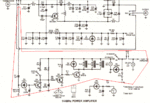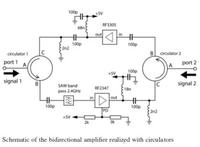AndreyG
Full Member level 4

- Joined
- May 10, 2010
- Messages
- 196
- Helped
- 27
- Reputation
- 54
- Reaction score
- 27
- Trophy points
- 1,308
- Location
- Vancouver, Canada
- Activity points
- 2,946
How to make VHF 'Antennafier' = bi-directional amplifier installed next to antenna terminals?
The only practical solutions I found either require Tx/Rx switching (requires control line that my radio does not have) or circulators that at VHF are large and expensive.
Are there any other practical solutions?
The only practical solutions I found either require Tx/Rx switching (requires control line that my radio does not have) or circulators that at VHF are large and expensive.
Are there any other practical solutions?




